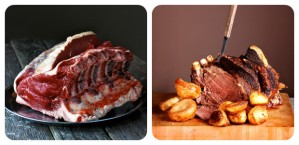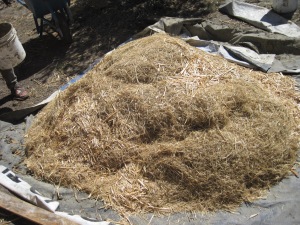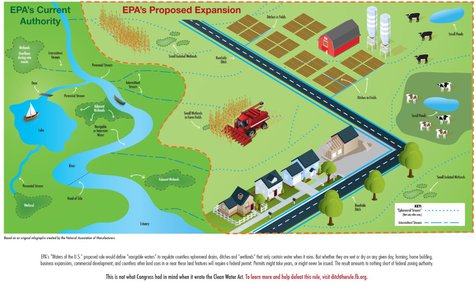Listen to Waid and Luke Dalton share their experience training miniature ponies to feed sheep and rope.
Agriculture
Beef – The Luxury Item
When I hear people rave about chicken, all I can do is wonder, “Where’s the beef?”
I hear fellow students on the bus tell their friend about the latest chicken recipe they found on pinterist. When I go out to eat with friends, they look at all the chicken dishes and woo over how scrumptious they look. My friends on diets all eat boneless skinless chicken breasts with broccoli and brag about how healthy they eat.
I stand in awe. I realize I am a college student that occasionally thinks a bowl of noodles tastes like heaven, but….still. Chicken is not that good. In fact, according to the principles of economics, it’s an inferior good! People who have sturdy jobs don’t go to a nice restaurants and order chicken, they order filet mignon.
In a survey done by Eaters, four of the top twenty most expensive dishes in the world are beef dishes.
Two of the top ten most expensive meals from Michelin star restaurants are beef dishes.
The average price of a beef meal at Cut in Los Angeles is $106 dollars, the highest in the country.
The point…beef is a luxury good. Chicken is an inferior good.
It’s simple economics terminology. An inferior good means an increase in income causes a fall in demand. The more money you make, the less chicken you buy. A luxury good means an increase in income causes a bigger percentage increase in demand. The more money you make, the more beef you buy.
I get it, most of the people I bump into every day are in college. The balance of our bank account is lower than the degrees in temperature outside. (In Logan UT, the temp actually drops into the negatives) Most of us eat cheap and we learn to like it. Chicken is cheap; everyone has some in the freezer.
But let’s stop for a moment and look at this beef issue from a perspective that is bigger than a college campus mentality.
In 2007, the retail equivalent value of the U.S. broiler industry was $45 billion, while the beef industry was valued at $74 billion. In 2014, the beef industry value increased to $95 billion.
That’s a lot of money folks. What’s even better than the money is the reason behind the money.
The beef industry made up of more than 1 million business, farms, and ranches. The industry contributes over 1.42 million direct and secondary jobs in the U.S., according to data from 2002.
Farm and ranch families comprise just 2 percent of the U.S. population, yet they feed the entire 100% of the population. Imagine that. They are handy people. The neat thing is that 97 percent of U.S. farms are operated by families – individuals, family partnerships or family corporations.
The beef industry is alive and well, but there are plenty of battles to be faced. It is a lot of hard work, driven by a love for agriculture, family, and honor.
We can’t all be ranchers. But we can all contribute to the beef industry and the U.S. economy by supporting beef. You can do this with your money, sure. But more importantly, you can do it with your voice.
Next time that lady in your yoga class or the guy behind you in line at the grocery store starts a chicken rant; remind them kindly that although BBQ chicken is great, it is actually an inferior good. Tell them about the last beef steak you served at your dinner party and how good your body felt after you surprised it with over half a dozen vitamins and essential nutrients found in lean beef.
Heck, start right now. We might not be able to get away from the inevitability of eating Tom the Turkey this Thanksgiving, but we sure can sneak a little beef into the holiday menu.
Here’s some recipes from the National Cattleman’s Beef Association to get you started!
If you are ever tempted to consider chicken scrumptious, just remember…it’s called fowl for a reason. 🙂
Heads and tails – how to halter break a steer
The Utah State University Animal Science club held their Annual Club Calf Sale on November 6, 2015. Consignors and buyers gathered at the South Farm in Logan, Utah to look at the lineup of steers and heifers.
The sale went well. Only one of the calves sold for fewer than two thousand dollars, and the average was about two thousand six hundred per head. Parents didn’t look too stressed reaching for their check books and the kids sure looked pretty happy with their purchases. The barbecue pork dinner was splendid, and that always counts for something.
The members of the Animal Science club were experiencing some relief at the sight of their biggest time chore was loaded into someone else’s trailer. But also some sadness as the trailer door slammed behind the calf they had willingly invested so many hours of effort into.
The members of the club spent a few hours each night for over a month getting the calves gentle and breaking them to lead.
Halter breaking can seem overwhelming if looked at as a one day task. Break it down into a series of steps and it is completely possible and really quite easy…calf willing of course.
1-Get the halter on the calf
- Use a chute, it’s safe and easy
- Use a nylon halter, they slip on and off easily
- Let the steer drag the lead rope around for a week or two to get used to resistance
- Get in the pen so the calf gets used to you
2-Tie the calf up
- Only 8”-12” slack to avoid getting tangled
- Start with 30 minutes, work up to 60 minutes if necessary
- Do for 1-7 days
- Rub the calf, brush it, get it gentle to your touch
- Tie securely to a sturdy post that won’t budge

3-Start walking the calf around and pulling him back and forth
- Start walking after it has been tied up
- You might not actually get very far, but just keep tugging
- Go in small circles, stay in an enclosed area
4-Lead the calf longer distances
- Take it to get a drink of water
- Lead in large circles, go for a little walk
5-Don’t ever let the steer get away from you
- If it gets away from you once, it will keep trying
- Make sure you only let it go after it has done what YOU want it to do
If all went well you should have a halter broke calf. It’s smart to do it one step at a time. Much better than tackling it all at once and getting drug around the pen which would probably result in some part of your body getting broke.
Waid and the Wheelbarrow
Stories. Real life stories from real life people who make real life mistakes and enjoy real life success. What better way to introduce folks to the simple, yet adventurous life that agriculturists live?
A real life story from the life of EDD.
“Waid and the Wheelbarrow”
Waid and I fed baby calves out in the barnyard together last week. It’s no fun to do alone, unless you love getting calf slobber all over your face, arms, and clean pants. I haven’t quite developed a love for that just yet, so we teamed up to do chores.
 We finished the first bunch pretty quick. I snatched the last squeaky bottle out of the calf’s slobbering mouth and threw it in the wheelbarrow with the rest of the bottles.
We finished the first bunch pretty quick. I snatched the last squeaky bottle out of the calf’s slobbering mouth and threw it in the wheelbarrow with the rest of the bottles.
“Mad-Man Waid” grabbed the handles and only made it about ten feet before he ran the front into a dry turd and spilled ALL thirty wet bottles. We both looked into each other’s eyes and had a silent conversation. I said, “Way to go…great.” He replied, “What?? Like I could see that HUGE cow turd RIGHT in front of me.” Together we picked up the dirty bottles and put them back in their proper place inside the wheelbarrow.
I reached for the driver’s position on the wheel barrow because Waid had obviously lost driving privileges. But no! “Mad-Man Waid” snatched the handles right out from under me, picked the wheelbarrow up and took off like a bat out of heck, obviously eager to prove he could navigate safely through the minefield of dry turds without spilling the bottles again.
“OK fine…” I muttered and slowly followed behind, just watching. He drew near the barn door, then out of nowhere it’s like he got another wild idea. He should have veered to the left, but he veered to the right, straight towards “the pile”. I’m sure he imagined himself wheeling up the side of the pile and sailing through the air with the wheelbarrow and bottles in perfect synchronization, all three elements landing safely together. So forward he drove and gave it one last hard push as he reached the edge of “the pile”.
The wheelbarrow hits the pile, stops immediately and slams back into Waid’s shins. Waid crumbles to the ground and the bottles fly into the air from the sudden impact. All thirty bottles somehow land on top of Waid. Almost magically, the wheelbarrow, bottles, and Waid all become a motionless part of “the pile”.
Poor Waid. He was all bruised up. His body and his pride were in need of some repair. In between moans he managed to tell me that he was going to just lie there for a little while longer until he could feel his legs again. I felt bad for the little guy, but I have to admit I was worried about a much bigger problem. I had just lost my chore buddy. That meant I had to feed the last twenty calves by myself. “Oh dear…” I thought, “that’s a lot of calf slobber.”
That’s all folks.
What the heck is WOTUS?
Waters of the Unites States.
It can be hard to keep up with the who, what, when, where, and why of all the current events in the world. Heck, most of us can’t even keep up with what is going on in our own communities. Information is readily available at the click of a button or a swipe of a finger. There is SO much information available that it can be a challenge to wade through it all and find the basic information we are looking for and NEED to be aware of. Here’s a brief explanation of the recent WOTUS happenings.
1. April 2014 – EPA publishes the proposed rule in Federal Register. Draft is what would become the final WOTUS rule.
2. May 12, 2015 –The U.S. House of Representatives passes H.R. 1732, which would send EPA back to the drawing board on the WOTUS rule.
3. May 27, 2015 – The White House approves EPA’s final rule.
4. June 29, 2015 – EPA publishes the final rule in the Federal Register.
5. August 28, 2015 – The WOTUS rule will officially go into effect.
6. September 8, 2015 – WOTUS rule blocked in 13 states.
7. October 9, 2015 – WOTUS blocked in 37 states by the U.S. Court of Appeals for the Sixth Circuit.
So what is WOTUS?
The EPA and the Army Corps of Engineers drafted a rule to revise the definition of “waters of the United States” (WOTUS) for all Clean Water Act (CWA) programs.
What would happen?
The changes contained in the proposed WOTUS rule would significantly expand federal control of land and water resources across the Nation.
What are the consequences?
Substantial additional permitting and regulatory requirements.
Where are we?
The U.S. Court of Appeals for the Sixth Circuit has issued a stay on the WOTUS rule due to the fact that there are several lawsuits from both states and stakeholder groups against WOTUS currently before courts across the country.18 states, “have demonstrated a substantial possibility of success on the merits of their claims” and that a stay will not cause undue harm to either the states or the environment,” said Judge David McKeague of the U.S. Court of Appeals for the Sixth Circuit.
Baby calf in a hutch
Baby Holstein calves need protection from the weather and other animals at a dairy.
Instead of calves remaining by their mother’s side after birth, they are placed in their own individual pen. Cows get taken up to the parlor twice and sometimes three times per day. If a calf was left with it’s mother, it would have to be sorted off while the cow was milked. Sounds simple. Now times that process by 100-5000 cows. Not so simple. Calves would get lost in the process, or worse yet, trampled and killed.
In order to keep them safe, they get their very own little house called a hutch. A hutch is a little plastic or fiberglass house equipped with an open door in the front and usually a window in the back or side. It keeps them warm and dry during bad weather.
They live in individual pens and hutches until they are about 2-3 months old. They get weaned from milk and start eating grain and hay. They usually move to a bigger pen with other calves. They might still be protected by hutches or they may be sheltered by a barn, lean-to or shed.
Check out how this dairy mom takes care of her baby calves.
Tell the agricultural story
It’s a tough life. Agriculture as a way of life and as an industry is attacked on several fronts by anti-agriculture activist groups. Misconceptions run rampant on what it means to be a farmer, rancher, and everything in between.
Just last month, Idaho rancher Jack Yantis was shot and killed by two deputies in a “completely unjustified” shooting. Yantis was trying to put his injured bull down, but the deputies shot and killed Yantis. It’s a horrid story.
It is also no surprise that the number of people working in agriculture is dramatically lower than it was 100 years ago.

If the collective body of agriculturists were to lie down, the voice of the misinformed world would run them over. Agriculturists need to stand up. They don’t have to push anyone else down in the process, just stand up on two feet and speak. Speak the truth as it really is. The simplicity of what we do, how we do it, and why we do it will be enough of a positive voice in this world. Agriculturists will be able to stand their ground and not be knocked over. People in America are fed, clothed and cared for because of the work that less than 2% of the population does with their minds, hands, and voices.
There are many ways to share the story of agriculture. The following list is an example of the many aspects of agricultural life and how we can address important matters.
Evolving Technology
Family Business
Way of life Leadership
Passion Essential
Integrity Stewardship
Be brave and stand up. Be kind and don’t push anyone over while you are standing up. Be courageous and speak. Be wise and speak the truth. Be simple and honest. It’s a tough life, but it’s a good life, and it is worth preserving. It is worth sharing.
Truth. Agriculture. Life
EDD









